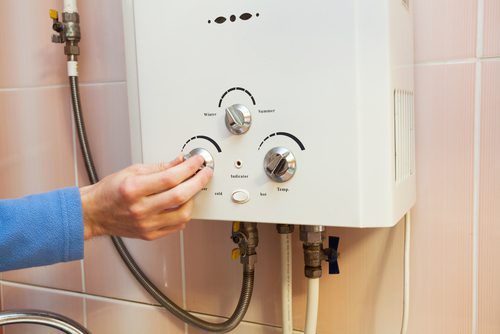How to Successfully Maintain Your Home's Hot Water System
How to Successfully Maintain Your Home's Hot Water System
Blog Article
Are you currently in search of info around What Kind of Maintenance Do Water Heaters Need??

Hot water is vital for daily comfort, whether it's for a rejuvenating shower or cleaning recipes. To guarantee your warm water system runs efficiently and lasts much longer, routine maintenance is key. This article supplies functional ideas and insights on how to keep your home's warm water system to prevent disruptions and pricey fixings.
Intro
Maintaining your home's warm water system may seem challenging, yet with a few straightforward actions, you can ensure it runs smoothly for many years ahead. This guide covers every little thing from comprehending your warm water system to DIY upkeep tips and recognizing when to hire specialist help.
Relevance of Maintaining Your Warm Water System
Regular upkeep not only prolongs the life-span of your hot water system yet also ensures it runs successfully. Neglecting maintenance can cause lowered performance, higher energy expenses, and also early failure of the system.
Indicators Your Warm Water System Demands Upkeep
Knowing when your hot water system needs attention can prevent major concerns. Watch out for indications such as irregular water temperature, unusual noises from the heating system, or rusty water.
Understanding Your Hot Water System
Before diving into maintenance tasks, it's practical to recognize the fundamental parts of your hot water system. Commonly, this includes the hot water heater itself, pipes, anode rods, and temperature level controls.
Regular Monthly Maintenance Tasks
Normal regular monthly checks can aid catch small problems before they intensify.
Flushing the Water Heater
Flushing your water heater removes debris build-up, boosting effectiveness and extending its life.
Monitoring and Changing Anode Rods
Anode rods prevent rust inside the storage tank. Checking and replacing them when worn is vital.
Evaluating and Changing Temperature Level Setups
Readjusting the temperature level setups makes certain optimum efficiency and safety and security.
DIY Tips for Upkeep
You can perform a number of upkeep jobs on your own to keep your hot water system in top condition.
Checking for Leakages
Frequently check pipes and connections for leakages, as these can lead to water damages and greater bills.
Checking Stress Relief Valves
Checking the stress relief valve guarantees it functions appropriately and stops excessive stress buildup.
Protecting Pipes
Protecting hot water pipes minimizes warmth loss and can save power.
When to Call a Professional
While do it yourself maintenance is helpful, some issues require specialist competence.
Complex Concerns Needing Professional Aid
Examples consist of significant leaks, electric problems, or if your hot water heater is constantly underperforming.
Routine Specialist Maintenance Conveniences
Expert upkeep can include thorough assessments, tune-ups, and ensuring compliance with safety and security standards.
Verdict
Routine upkeep of your home's hot water system is crucial for effectiveness, long life, and expense financial savings. By complying with these pointers and understanding when to look for expert aid, you can guarantee a trusted supply of hot water without unanticipated disruptions.
How to Maintain an Instant Hot Water Heater
Before tinkering with your hot water heater, make sure that it’s not powered on. You also have to turn off the main circuit breaker and shut off the main gas line to prevent accidents. Also turn off the water valves connected to your unit to prevent water from flowing into and out of the appliance. 2. When you’re done, you have to detach the purge valves’ caps. These look like the letter “T†and are situated on either side of the water valves. Doing so will release any pressure that has accumulated inside the valves while at the same time avoid hot water from shooting out and burning your skin. 3. When the purge valves’ caps are removed, you have to connect your hosing lines to the valves. Your unit should have come with three hoses but if it didn’t, you can purchase these things from any hardware or home repair shops. You can also get them from retail stores that sell water heating systems. Read the user’s manual and follow it to complete this task properly. When the hosing lines are connected, open the purge port’s valves. 4. You should never use harsh chemical cleaners or solutions when cleaning your unit. Make use of white vinegar instead. It should be undiluted and you’ll probably use about 2 gallons. 5. Now flush your water heater. This task should probably take about 40 minutes. We can’t give you specific directions for this because the procedure is carried out depending on the type, model and brand of your heater. With that being said, refer to the user’s manual. 6. When you’re done draining the unit, you have to turn off the purge port valves again. Remove the hosing lines that you earlier installed on each of the water valves. Put the valve caps (purge port) back in their respective places and be very careful so as not to damage the rubber discs that are found inside these caps. 7. Now that everything’s back in place, check your user’s manual again to find out how to reactivate your water heating system. 8. Once it is working, turn one of your hot water faucets on just to let air pass through the heater’s water supply pipes. Leave the tap on until water flows smoothly out of it. https://www.orrplumbing.com/blog/2014/september/how-to-maintain-an-instant-hot-water-heater/

I am just very eager about How to Maintain Your Water Heater & Prolong its Life and I'm hoping you enjoyed reading my article. For those who enjoyed our article kindly be sure to share it. Bless you for your time. Please visit our website back soon.
Call Today Report this page